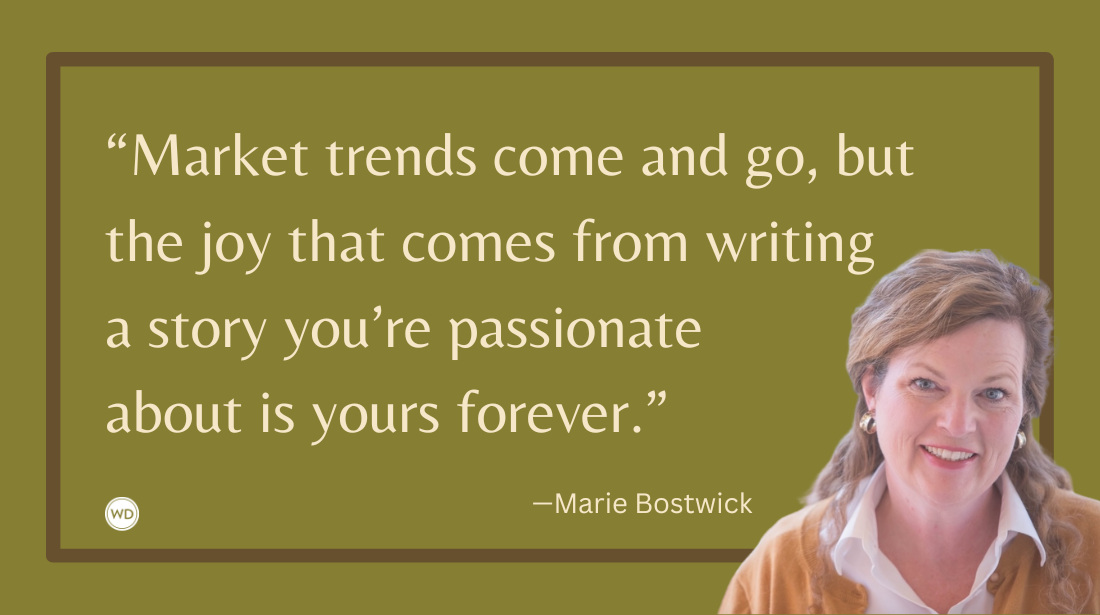10 Scary Horror Books for October
Writer’s Digest editor and Halloween enthusiast Robert Lee Brewer shares 10 great horror books to get readers in the mood for October.
We love a good scary tale in the Brewer household, and October is our favorite month. We get to watch some Halloween specials, decorate the house and yard, and even eat a little (okay, a lot of) candy. And with the longer evenings, there's even more time to read spooky books.
I've listed some of my all-time favorite scary horror books below. These are listed in chronological order from when they were originally published. Most of them, though not all, were published before I was born.
I know there are quite a few great stories that couldn't make the list. In fact, our newest editor Moriah Richard will share a more contemporary list next weekend. That said, please feel encouraged to share your favorite snubs in the comments below.
And have a spooktacular October!
*****
Learn from the experts on how to write a horror story that excites readers for decades (or centuries)! Even the scariest and most attention-grabbing horror story ideas will fall flat without a foundation of knowledge about the genre and expectations of the audience. In this collection, you'll find practical tips for writing horror stories that are plausible and cliché-free.
*****
Frankenstein, by Mary Shelley (1818)
(Writer's Digest uses affiliate links.)
Before any of the other books on this list, 20-year-old Mary Shelley published Frankenstein; or, The Modern Prometheus anonymously on January 1, 1818. It was composed by an 18-year-old Shelley, who wrote it as part of a ghost story competition (which she won) with Percy Bysshe Shelley and Lord Byron during the year without a summer. This is perhaps my wife's favorite novel, and it's hard to argue against it.
The Legend of Sleepy Hollow, by Washington Irving (1820)
Many of the best horror stories have an element of humor to help take the edge off. Enter the ambitious scholar Ichabod Crane and his night-time encounter with the Headless Horseman of Sleepy Hollow. While the story itself was set in 1790, it was first published in 1820 as part of a collection of stories and essays titled The Sketch Book of Geoffrey Crayon, Gent. As a shorter work, most readers would have no trouble reading (and enjoying) it all in one sitting.
The Tell-Tale Heart and Other Writings, by Edgar Allan Poe (1843)
Edgar Allan Poe's classic short story "The Tell-Tale Heart" was originally published in January 1843 in the inaugural issue of The Pioneer (possibly paid $10 for the story). Of course, this collection includes many other short stories, including "The Cask of Amontillado," "The Masque of the Red Death," and "The Fall of the House of Usher." But it also includes the immortal poem, "The Raven." A lot of terrifically terrifying reads in this volume.
The Picture of Dorian Gray, by Oscar Wilde (1890)
I almost didn't include this novel on the list, because I often don't think of it as a scary story. Rather, I consider it one of the most beautifully written novels. However, that beautiful writing belies a horrifying premise that a beautiful man can act like a monster without it impacting his physical beauty, instead all of his ugliness is transposed on to a painting of him. It truly is the definition of the adage "never judge a book by its cover."
Dracula, by Bram Stoker (1897)
Bram Stoker's Dracula was a critical success upon its initial publication, but it was not a commercial and iconic success until after the author's death in the 20th century. That said, it's a great read that jumps from journal and diary entries to letters and even a "Cutting from 'The Dailygraph,' 8 August." Of course, this is the birthplace of so many Dracula retellings since, but it also helped shape the vampire genre that shows up again later on this list.
The Haunting of Hill House, by Shirley Jackson (1959)
This book is simultaneously one of the scariest reads I've ever experienced and one of the best third person narratives ever for any genre. Plus, it has about as perfect a framing device as possible, which makes perfect sense since this book is as much about a house as it is about the people who come into contact with it.
The Halloween Tree, by Ray Bradbury (1972)
This one makes the list, because it's a sentimental favorite that reminds me of Halloweens of my youth. Bradbury's The Halloween Tree is also a fun novel to read to the kids at night time throughout the month of October. There are 19 chapters, so reading a chapter an evening starting on the 12th will finish up on the 30th.
'Salem's Lot, by Stephen King (1975)
There are many King novels I could've included on this list, but 'Salem's Lot is the one that scared me the most as a teenager. It has an interesting prologue and poetic epilogue sandwiched around three sections of convincingly contemporary vampire fiction specifically inspired by Stoker's Dracula.
Interview With the Vampire, by Anne Rice (1976)
Interview With the Vampire is not the scariest vampire novel. In my opinion, it's not even the best novel in Rice's Vampire Chronicles (Lestat is such a great narrator), but it does kick off the series. The premise is beautifully simple and captured in the title of the book: It's quite simply an interview with a vampire. Finally, we get their perspective. But I love many of Rice's novels (including the Mayfair witches), because she really creates an incredibly sophisticated alternate world that exists alongside our contemporary world (or at least, contemporary at the time).
Beloved, by Toni Morrison (1987)
Finally, let's end this list with a ghost story and the only book published during my lifetime. It also happens to be set in my home state of Ohio. It could come off as some home-grown favoritism, but this is a seriously great story that won the Pulitzer and was a finalist for the National Book Award, in addition to being ranked the best work of American fiction between 1981 and 2006 by The New York Times.
*****
So what do you think? I can't believe Wuthering Heights didn't make my list. Or The Shining. And, of course, there are so many other novels and stories that could've been contenders, and I was probably more than a little vampire-heavy. I'll probably re-arrange the list as soon as I hit publish, but that's the life of a list maker.
Which books would you add? Leave a comment below.
Robert Lee Brewer is Senior Editor of Writer's Digest, which includes managing the content on WritersDigest.com and programming virtual conferences. He's the author of 40 Plot Twist Prompts for Writers: Writing Ideas for Bending Stories in New Directions, The Complete Guide of Poetic Forms: 100+ Poetic Form Definitions and Examples for Poets, Poem-a-Day: 365 Poetry Writing Prompts for a Year of Poeming, and more. Also, he's the editor of Writer's Market, Poet's Market, and Guide to Literary Agents. Follow him on Twitter @robertleebrewer.








